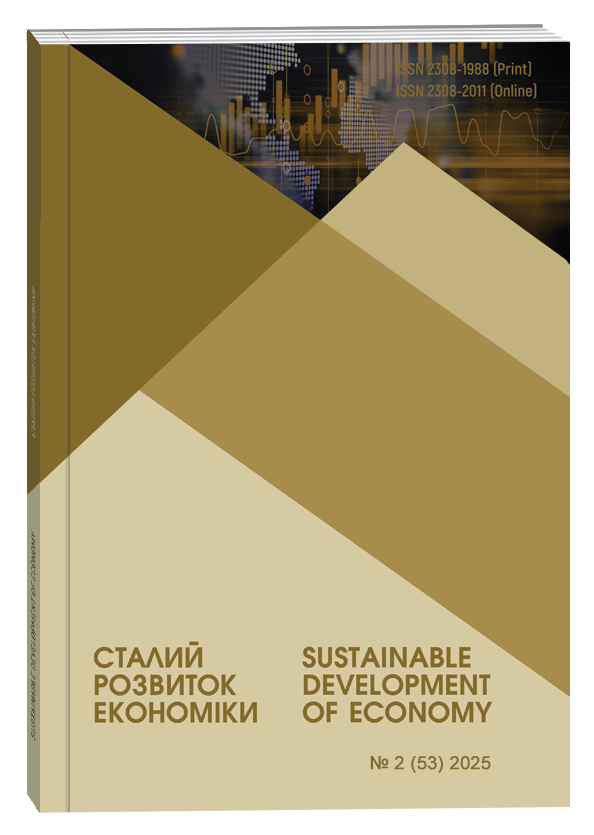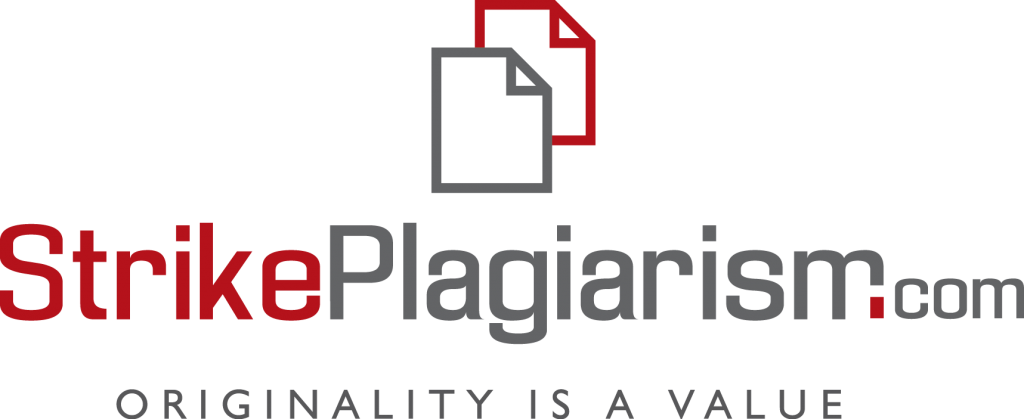SUSTAINABLE DEVELOPMENT AS A STRATEGIC PRIORITY OF ENTERPRISE LOGISTICS MANAGEMENT
Abstract
The article explores the theoretical foundations and practical dimensions of integrating sustainable development principles into enterprise logistics management. It emphasizes that sustainability is no longer a supplementary function but a strategic imperative that unites economic efficiency, environmental protection, and social responsibility. The authors analyze how logistics systems contribute to achieving global Sustainable Development Goals, particularly responsible consumption and production, and how digital technologies such as the Internet of Things (IoT), Artificial Intelligence (AI), and Big Data analytics are transforming supply chains toward greater transparency, resilience, and eco-efficiency. Special focus is placed on the ethical selection of suppliers, the implementation of circular economy models, and the development of reverse logistics for waste reduction and resource recovery. The article identifies a comprehensive system of sustainable logistics management principles and provides a comparative overview of contemporary strategies such as Lean, Kaizen, Six Sigma, and Blue Ocean, showing how these approaches can support sustainable logistics at both operational and strategic levels. Furthermore, the research highlights the importance of transparent logistics chains and the role of emerging technologies (e.g., blockchain) in ensuring compliance with ethical standards and environmental regulations. It also stresses the necessity of partnerships and stakeholder collaboration as a foundation for integrated sustainability strategies. The use of real-time data monitoring and predictive analytics is shown to significantly enhance decision-making in logistics, reducing inefficiencies and promoting proactive environmental management. In addition, the article emphasizes the value of aligning corporate logistics strategies with national and international regulatory frameworks and sustainability benchmarks. The integration of green procurement practices, energy-efficient transportation, and closed-loop logistics systems are identified as key enablers of long-term environmental and economic benefits. The study also outlines the potential of cross-sectoral innovation and interdisciplinary research in shaping resilient and adaptive logistics models. A clear link is established between sustainability-driven logistics and increased brand loyalty, customer trust, and corporate reputation. The article concludes that digital transformation and sustainability are interdependent drivers of competitive advantage and long-term enterprise development. Key directions for future research include assessing sustainability metrics for logistics systems, benchmarking digital logistics solutions, and examining international practices of sustainable logistics implementation.
References
Bowersox D.J., Closs D.J. Logistical Management. Mc Millan Pudlishing, 3rd ed., 1991, 314 p.
Circular Economy. URL: https://www.maersk.com/insights/logistics-trend-map/circular-economy-logistics?utm_source=chatgpt.com&exit=ExitIntentPopup+-+logistics+trend+map (дата звернення 04.04.2025).
Dehtyarova I., Melnyk L., Kubatko O., Karintseva O., Matsenko O. Disruptive Technologies for Green Economy Formation in Conditions of the Fourth Industrial Revolution: the EU Experience. Socio-economic and management concepts: collective monograph. Іnternational Science Group. Boston: Primedia eLaunch, 2021. рр. 388-392. URL: https://essuir.sumdu.edu.ua/handle/123456789/86986 (дата звернення: 04.04.2025).
Dragomir V.D. (2018). Sustainability and digital transformation in supply chains: The role of Big Data and AI. Journal of Cleaner Production, No. 197, pp. 624–635. DOI: https://doi.org/10.1016/j.jclepro.2018.06.234 (дата звернення: 27.03.2025).
Ethical Supplier Selection. URL: https://www.dragonsourcing.com/ethical-supplier-selection (дата звернення: 10.04.2025).
Goal 12: Ensure sustainable consumption and production patterns. URL: https://www.un.org/sustainabledevelopment/sustainable-consumption-production (дата звернення: 27.03.2025).
Holweg M. The genealogy of lean production. Journal of Operations Management, 2007. Vol. 25(2), No. 2, pp.420-437.
IBM. AI for Sustainable Supply Chains. IBM Watsonx Sustainability. 2023. URL: https://www.ibm.com/watsonx/sustainability (дата звернення: 04.04.2025).
Kamble S.S., Gunasekaran A., Dhone N.C. Industry 4.0 and lean manufacturing practices for sustainable organizational performance in Indian manufacturing companies. Journal of Cleaner Production, 2020. No. 238. DOI: https://doi.org/10.1016/j.jclepro.2019.117740 (дата звернення: 04.04.2025).
Maersk. IoT Solutions for Greener Logistics. Maersk Insights. 2022. URL: https://www.maersk.com/news/articles/2022/02/10/maersk-strengthens-supply-chain-iot (дата звернення: 10.04.2025).
Mark Jackley. Supply Chain Transparency Defined: Why It Matters and Its Benefits. Content Strategist. 2023. URL: https://www.oracle.com/lv/scm/supply-chain-transparency (дата звернення: 10.04.2025).
Nestlé. Using Data to Reduce Carbon Footprint in Global Supply Chains. Nestlé Global. 2023. URL: https://www.nestle.com/stories/nestle-carbon-footprint-data (дата звернення: 10.04.2025).
Pande P.S., Neuman Robert P., Gavanagh Roland R. The Six Sigma Way: How GE, Motorola, and Other Top Companies Are Honing Their Performance. McGraw-Hill, 2000. 282 p.
Sarkis J. A strategic decision framework for green supply chain management. Journal of Cleaner Production, 2003. Vol. 11(4), No. 4, pp. 397-409. DOI: https://doi.org/10.1016/S0959-6526(02)00062-8 (дата звернення: 11.04.2025).
Seuring S., Müller M. From a literature review to a conceptual framework for sustainable supply chain management. Journal of Cleaner Production, 2008. Vol. 16(15), No. 15, pp. 1699-1710. DOI: https://doi.org/10.1016/j.jclepro.2008.04.020 (дата звернення: 11.04.2025).
Trackonomy Systems. (2024). IoT for Supply Chain Transparency. URL: https://trackonomy.ai/blog/supply-chain-transparency (дата звернення: 10.04.2025).
What is Blue Ocean Strategy? URL: https://www.blueoceanstrategy.com/what-is-blue-ocean-strategy (дата звернення: 27.03.2025).
What is sustainable logistics? Examples and definition. URL: https://vasscompany.com/us-can/en/insights/blogs-articles/sustainable-logistics (дата звернення: 27.03.2025).
Гайдай І.І., Коваленко О.П. Цифровізація ланцюгів постачання як чинник забезпечення сталого розвитку. Економіка та держава, 2021, № 9, C. 44–48. DOI: https://doi.org/10.32702/2306-6806.2021.9.44
Жарська І.О. Сучасні тренди логістики сталого розвитку. Бізнес Інформ, 2022. № 10. C. 206–211. DOI: https://doi.org/10.32983/2222-4459-2022-10-206-211.
Левіщенко О.С., Кузьменко С.В. Стратегія сталого розвитку логістичної компанії: етапи впровадження та ключові виклики. Економіка та суспільство, 2024. Випуск № 68. DOI: https://doi.org/10.32782/2524-0072/2024-68-113
Методологія управління і її компоненти. URL: http://onlymyfacts.in.ua/economy312.html (дата звернення: 27.03.2025).
Пальчик І.М. Логістичне управління підприємством – теоретико-методичний аспект. URL: http://www.economy.nayka.com.ua/?op=1&z=3442 (дата звернення 27.03.2025).
Смерічевська С.В. Стратегічні тренди розвитку ланцюгів поставок нового покоління в епоху цифровізації економіки. Бізнес, інновації, менеджмент: проблеми та перспективи: збірник тез доповідей ІІ Міжнародної науково-практичної конференції (м. Київ, 22 квітня 2021 р.). Київ, 2021. С. 282–283.
Хаджинова О.В. Логістична стратегія управління витратами великого багатопрофільного промислового підприємства: автореф. дис. канд. екон. наук: спец. 08.06.01 «Економіка, організація і управління підприємствами». Донецьк, 2006. 23 с.
Що таке Цілі сталого розвитку? URL: https://www.undp.org/uk/ukraine/tsili-staloho-rozvytku (дата звернення 27.03.2025).
Bowersox D. J., Closs D. J. (1991). Logistical Management. Mc Millan Pudlishing, 3rd ed. 314 p.
Circular Economy. Available at: https://www.maersk.com/insights/logistics-trend-map/circular-economy-logistics?utm_source=chatgpt.com&exit=ExitIntentPopup+-+logistics+trend+map
Dehtyarova I., Melnyk L., Kubatko O., Karintseva O., Matsenko O. (2021) Disruptive Technologies for Green Economy Formation in Conditions of the Fourth Industrial Revolution: the EU Experience. Socio-economic and management concepts: collective monograph. Іnternational Science Group. Boston: Primedia eLaunch, рр. 388-392. Available at: https://essuir.sumdu.edu.ua/handle/123456789/86986
Dragomir V. D. (2018). Sustainability and digital transformation in supply chains: The role of Big Data and AI. Journal of Cleaner Production, No. 197, pp. 624–635. Available at: https://doi.org/10.1016/j.jclepro.2018.06.234
Ethical Supplier Selection. Available at: https://www.dragonsourcing.com/ethical-supplier-selection
Goal 12: Ensure sustainable consumption and production patterns. Available at: https://www.un.org/sustainabledevelopment/sustainable-consumption-production
Holweg M. (2007). The genealogy of lean production. Journal of Operations Management, Vol. 25(2), No. 2, pp. 420–437.
IBM. (2023). AI for Sustainable Supply Chains. IBM Watsonx Sustainability. Available at: https://www.ibm.com/watsonx/sustainability
Kamble S.S., Gunasekaran A., Dhone N.C. (2020). Industry 4.0 and lean manufacturing practices for sustainable organizational performance in Indian manufacturing companies. Journal of Cleaner Production, No. 238. DOI: https://doi.org/10.1016/j.jclepro.2019.117740
Maersk. (2022). IoT Solutions for Greener Logistics. Maersk Insights. Available at: https://www.maersk.com/news/articles/2022/02/10/maersk-strengthens-supply-chain-iot
Mark Jackley. (2023). Supply Chain Transparency Defined: Why It Matters and Its Benefits. Content Strategist. Available at: https://www.oracle.com/lv/scm/supply-chain-transparency
Nestlé (2023). Using Data to Reduce Carbon Footprint in Global Supply Chains. Nestlé Global. Available at: https://www.nestle.com/stories/nestle-carbon-footprint-data
Pande P. S., Neuman Robert P., Gavanagh Roland R. (2000). The Six Sigma Way: How GE, Motorola, and Other Top Companies Are Honing Their Performance. McGraw-Hill, 282 p.
Sarkis J. (2003). A strategic decision framework for green supply chain management. Journal of Cleaner Production, Vol. 11(4), No. 4, pp. 397–409. DOI: https://doi.org/10.1016/S0959-6526(02)00062-8
Seuring S., Müller M. (2008). From a literature review to a conceptual framework for sustainable supply chain management. Journal of Cleaner Production, Vol. 16(15), No. 15, pp. 1699–1710. DOI: https://doi.org/10.1016/j.jclepro.2008.04.020
Trackonomy Systems. (2024). IoT for Supply Chain Transparency. Available at: https://trackonomy.ai/blog/supply-chain-transparency
What is Blue Ocean Strategy? Available at: https://www.blueoceanstrategy.com/what-is-blue-ocean-strategy
What is sustainable logistics? Examples and definition. Available at: https://vasscompany.com/us-can/en/insights/blogs-articles/sustainable-logistics
Haĭdaĭ I. I., Kovalenko O. P. (2021). Tsyfrovyzatsiia lantsiuhiv postachannia yak chynnyk zabezpechennia staloho rozvytku [Digitalization of supply chains as a factor in ensuring sustainable development]. Ekonomika ta derzhava, No. 9, pp. 44–48. DOI: https://doi.org/10.32702/2306-6806.2021.9.44 (in Ukrainian)
Zharska I. O. (2022). Suchasni trendy lohistyky staloho rozvytku [Modern trends in sustainable logistics]. Biznes Inform, No. 10, pp. 206–211. DOI: https://doi.org/10.32983/2222-4459-2022-10-206-211 (in Ukrainian)
Levishchenko O. S., Kuzmenko S. V. (2024). Stratehiia staloho rozvytku lohistychnoi kompanii: etapy vprovadzhennia ta kliuchovi vyklyky [Sustainable development strategy of a logistics company: Implementation stages and key challenges]. Ekonomika ta suspilstvo, No. 68. DOI: https://doi.org/10.32782/2524-0072/2024-68-113 (in Ukrainian)
Metodolohiia upravlinnia i yii komponenty [Management methodology and its components]. Available at: http://onlymyfacts.in.ua/economy312.html (in Ukrainian)
Palchyk I. M. Lohistychne upravlinnia pidpryiemstvom – teoretyko-metodychnyi aspekt [Logistics management of an enterprise – theoretical and methodological aspect]. Available at: http://www.economy.nayka.com.ua/?op=1&z=3442 (in Ukrainian)
Smerichevska S. V. (2021). Stratehichni trendy rozvytku lantsiuhiv postavok novoho pokolinnia v epokhu tsyfrovalizatsii ekonomiky [Strategic trends in the development of next-generation supply chains in the era of digitalization of the economy]. In Biznes, innovatsii, menedzhment: problemy ta perspektyvy: zbirnyk tez dopovidei II Mizhnarodnoi naukovo-praktychnoi konferentsii, pp. 282–283. Kyiv. (in Ukrainian)
Khadzhynova O. V. (2006). Lohistychna stratehiia upravlinnia vytratamy velykoho bahatoprofílnoho promyslovoho pidpryiemstva [Logistics strategy of cost management in a large diversified industrial enterprise] (PhD Thesis). Donetsk. (in Ukrainian)
Shcho take Tsili staloho rozvytku? [What are the Sustainable Development Goals?]. Available at: https://www.undp.org/uk/ukraine/tsili-staloho-rozvytku (in Ukrainian)


